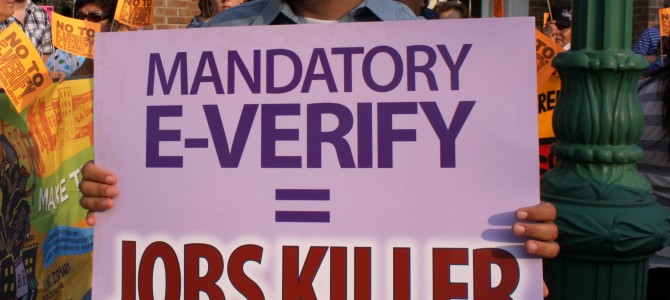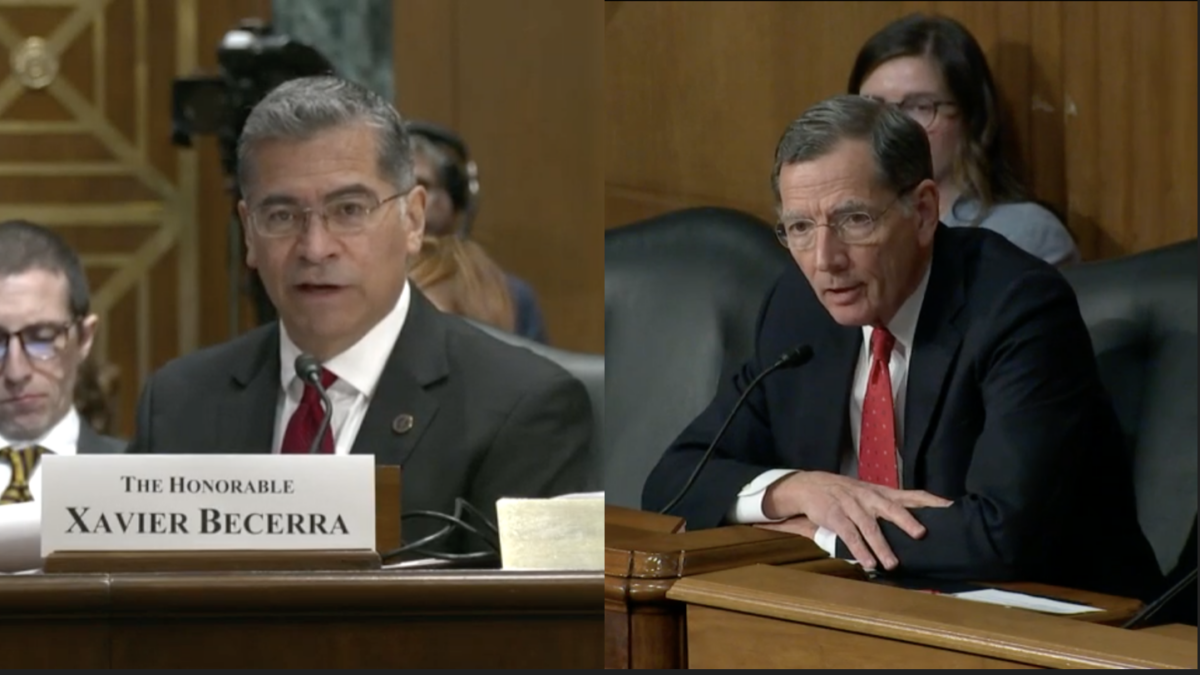
An electronic employment verification system (or E-Verify, as it’s known) is widely considered to be an essential component of immigration reform. It shouldn’t be. E-Verify is an expensive and wrongheaded labor market regulation that will force every American employer to ask the federal government for permission to employ workers. To add insult to economic injury, E-Verify is also ineffective at deterring unauthorized immigration.
E-Verify requires employers to feed the identity information of prospective employees into a federal online database that then verifies the information with that stored in the Department of Homeland Security and state DMVs.
If the worker is cleared for employment, as happens upwards of 95 percent of the time, then the worker’s employment is lawful. If there is something suspicious about the worker’s information, E-Verify issues a tentative nonconfirmation (TNC). That gives the worker and his employer some time to contest the decision by identifying and correcting errors in the worker’s identification. During this time, the employer is not legally allowed to fire the employee and must keep him or her on the payroll until the worker’s identity problems are fixed.
In reality, E-Verify will make it harder for hundreds of thousands of legal Americans to get a job. According to a recent independent audit of E-Verify conducted by the firm Westat, between 0.7 to 0.3 percent of all E-Verify queries produced erroneous TNCs, meaning they were issued to legal workers. If 150 million American workers were run through E-Verify tomorrow, somewhere between 450,000 and slightly more than 1 million American workers would be notified that if they do not address the problem then they will lose their jobs. Those American would then have to correct any inconsistencies before the government gave them clearance to be employed full time. That hardly seems fair for these legal workers.
Looking more deeply into the data from Westat, it’s clear that E-Verify’s error rates have been improving over the last decade. The TNC rate for American citizens, a subset of legal workers, has fallen from 0.6 percent to 0.2 percent – a commendable improvement. However, the error rate for permanent lawful residents on green cards and visa holders has increased from 1.5 percent to 2 percent. It is now more common for legal immigrants to be given a false TNC than it used to be.
If the worker and employer are unsuccessful in contesting the TNC, the worker is issued a final nonconfirmation (FNC) which means the worker MUST be fired. The Westat audit found that fully 6.3 percent of the FNCs issued are erroneous. In other words, E-Verify makes it illegal to hire some Americans.
The Westat audit cited various reasons for FNC errors, such as clerical mistakes, name mismatches, the inability of workers to produce various documents, and employer mistakes in dealing with the system. The last reason is not surprising, considering that the E-Verify manual for employers is 88 pages long and overly complicated – especially for small business owners who don’t have legal or human resources departments. Worse, the average E-Verify query costs a business $147 – mainly because businesses will have to spend legal resources to clear their employees who receive TNCs.
Because so many workers would be stopped from working due to red tape and system errors, the Congressional Budget Office estimated in 2008 that mandatory nation-wide E-Verify would decrease federal tax revenue by $17.8 billion dollars over the course of a decade. Decreasing federal revenue in and of itself is not a bad outcome but it comes at the cost of stopping Americans from legally working, and forcing others to work off-the-books in the black market. That’s not the outcome E-Verify supporters were hoping for.
A study from Berkeley’s Institute for Research on Labor and Employment found it costs employers $4,000 to replace the average worker, with costs for blue collar professions near $2,000 and for certain white collar professions as high as $7,000. Based on those numbers, replacing 500,000 falsely disqualified workers would cost employers $2 billion. It doesn’t take an economist to know that imposing higher costs on employers will increase unemployment, not decrease it.
Aside from the higher costs, E-Verify is actually redundant. Employees already have to fill out an I-9 form and show their employers a form of identification to be legally hired. These forms are subject to audits that the Obama administration has ramped up in recent years.
Other costs will be borne by American taxpayers. The E-Verify mandate passed as part of the Senate’s immigration reform bill would impose around $2.1 billion in government expenditures over the course of a decade. That’s in addition to the $1.37 billion for technology upgrades and overhead that the bill mandates. Worse, it would require the hiring of 5,000 enforcement offices at a cost of approximately $230 million dollars a year, amounting to nearly $2.3 billion over the first decade of the program.
In addition to the economic costs, E-Verify is not effective at forcing unauthorized immigrants out of the labor market. One of the major flaws of the system pointed out by the Westat audit is that only about half of all unauthorized immigrants checked through E-Verify are flagged as unauthorized. Half are confirmed to work. How could that be the case?
Since E-Verify checks the documents given by the employee to the employer, an unauthorized immigrant just has to present a stolen identity to get legally confirmed to work. If E-Verify were mandatory for all hires, it would actually incentivize more identity theft as we’ve seen in states that have mandated E-Verify for all hires.
In states like Arizona, where E-Verify has been mandated for all employers since 2008, economic sectors that weren’t affected by the recession, but employed many unauthorized immigrants, decreased their number of foreign born workers through firing or other means – just as E-Verify’s supporters intended. However, legal workers did not fill in the gaps in the workforce. Once empty, those jobs stayed unfilled.
For instance, in the immigrant-heavy farming industry, crop production employment dropped by 15.6 percent in the first four years after E-Verify became mandatory. American workers did not fill the gaps. In neighboring New Mexico and California, crop production employment increased over the same time period. E-Verify explains much of that difference.
More interestingly, large numbers of Arizona employers avoid the problems of E-Verify by simply ignoring it altogether. Since E-Verify was mandated, only about half of all new hires in the state were run through it, even though the law requires 100 percent compliance. Employers adjusted to the E-Verify regulatory burden by simply ignoring it, deepening the black market in Arizona – which is the opposite of the intended result.
Immigration reform should make compliance with the law easier, not create more of an incentive to break it. E-Verify is supposed to make enforcing immigration law easier, but it imposes an enormous economic cost on Americans while incentivizing black market hiring – it should be scrapped.
Alex Nowrasteh is the immigration policy analyst at the Cato Institute’s Center for Global Liberty and Prosperity.








